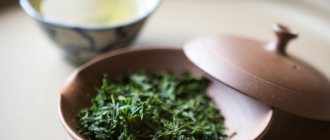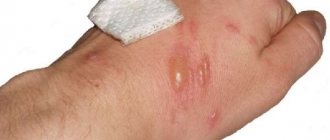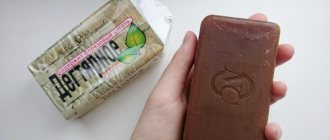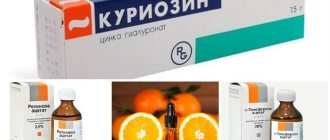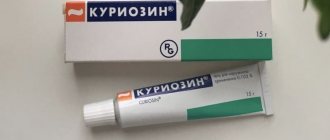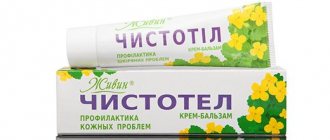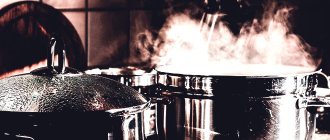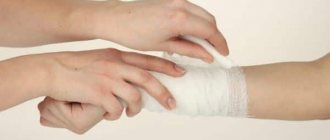Indications for applying a bandage for burns
In pharmacies, anti-burn dressings are available in a wide range and are suitable for treating wounds of varying severity. Closed treatment is the use of therapeutic bandages for burns. The drug and type of dressing depend on the degree of damage. The closed method of therapy is necessary to achieve the following results:
- protects the wound from secondary infection, injury and hypothermia;
- reducing the evaporation of moisture from the burn;
- medications suppress the proliferation of bacteria and help regenerate damaged cells;
- A patient with severe burns cannot be transported to the hospital without a wound dressing.
When providing first aid for serious injuries, ointments should not be used, as they may affect the correct assessment of the extent of the injury and the final diagnosis.
Basic Rules
The burn dressing is treated with solutions that achieve the following results:
- surface disinfection;
- moisturizing the skin;
- accelerated recovery;
- anesthesia;
- the antibacterial properties of the antiseptic are manifested.
Before using burn remedies, read the list of recommendations. The application rules for burns are as follows:
- Complete sterility is maintained. A bandage is usually used to secure the patch. It must be clean, preferably from a new package that has not yet been opened. This will eliminate the risk of penetration of pathogenic microorganisms;
- You can only apply a bandage to a burn wound of mild or moderate severity. It is forbidden to apply any pressure to a severe burn. In this case, the fabric may stick and be difficult to remove;
- It is permissible to apply wet antiseptic dressings only after treating the surface of the affected area with disinfectants. A healing ointment is also applied before use.
Types of dressings for burns and their purpose
Sterile fabrics, gauze, plaster and other materials are used as dressings. You can make the bandage yourself or buy it at the pharmacy.
Antiseptic dressings
Antiseptic dressings for thermal injuries of any severity are used to prevent infection and destroy harmful bacteria. The drug disinfects and has a bacteriostatic effect. The primary treatment is the use of an aseptic dressing for burns.
Acerbine aseptic aerosol
A bandage or clean cotton fabric is used as a base. You can buy ready-made dressings with the addition of silver, iodine, but without ethyl alcohol. Some of the most common DIY antiseptics include:
- Acerbine, a drug in aerosol form for external use with active substances: benzoic acid, malic acid and salicylic acid. Aseptic spray is used for burns of various stages. Acerbine accelerates the regeneration of damaged tissues and promotes the formation of a protective shell;
- Amprovisol - the drug contains an anesthetic and vitamin D. Menthol and propolis are used as additives. It has anti-burn and antibacterial properties, relieves inflammation, cools and relieves painful injuries. Used for 1st degree burns;
- Betadine is an iodine-based drug with a wide spectrum of action. Used to treat burns in the form of an ointment or solution. It has bactericidal properties, destroys proteins and enzymes of pathogenic microorganisms. It is used for antiseptic treatment of burns and disinfection of the wound area;
- Miramistin - used for primary treatment of burns of varying degrees before medical intervention. The drug is active against gram-positive and gram-negative microorganisms;
- Chlorhexidine is a solution for topical use with pronounced bactericidal properties. When applied to a wound surface, it destroys the cell membranes of harmful microorganisms. The use of the drug helps to avoid burn infection.
Miramistin
To prepare the bandage, the bandage is soaked in the above preparations and then applied to the wound. The bandage is fixed with plaster or bandaged with a dry bandage.
Ready-made dressings with antiseptics are also sold:
- Activtex - wipes impregnated with medications (antiseptics, antioxidants, hemostatic agents). For inflammatory thermal lesions, bandages with analgesic and bactericidal properties are used;
- VitaVallis - the product does not contain antibiotics or other drugs. Suitable for treating burns of all degrees of protection against secondary infection. The product contains silver and aluminum ions, which are impregnated with a special antiseptic fiber. VitaVallis accelerates the restoration of damaged tissues and reduces the risk of scar formation after healing. Can be used as a pain reliever. The drug is intended for one-time use only;
- VoskoPran - the bandage is made in the form of a polyamide mesh with antiseptic impregnation, antibiotic and beeswax. When applied to a wound, it promotes the outflow of serous fluid and accelerates healing. The bandage does not stick to the injured area, so its use does not cause discomfort;
- Biodespol is a bandage with an antiseptic effect and as a pain reliever. Clears the wound of crusts and fibrin, supports tissue regeneration.
Using ready-made dressings is easy. All stages of submitting an application are described in detail in the attached instructions.
Antiseptic burn dressing VoskoPran
Ointment dressings for burns
Like antiseptics, ointment-based dressings can be made independently or purchased at a pharmacy. The finished material is a medicine applied to a mesh fabric with external protection. Bandages with ointment help reduce pain and restore damaged areas of the epidermis. The following drugs are used as drugs in the tissue matrix:
- Levomekol is an ointment with an antibiotic and an immunostimulant. It has proven itself well in the treatment of burn wounds of 2-3 degrees, including purulent ones. Improves tissue regeneration, reduces inflammation and the formation of serous fluid;
- Argosulfan - the drug has an antibacterial and wound-healing effect. Anesthetizes and relieves inflammation. Used to treat burns of varying severity;
- Ebermin is a bactericidal ointment containing silver ions. It kills pathogenic bacteria and promotes rapid wound healing. Proven to treat both mild and deep injuries. Using the drug after burns helps keep the skin without scars;
- Eplan - the drug promotes wound healing, has bactericidal and regenerating properties. For external use it is available in the form of a cream and a medical gauze bandage with ointment. Effective for all types of burns;
- Rescuer - the drug nourishes and accelerates tissue regeneration, fights bacteria that cause inflammation, soothes and relieves damaged epidermis. After application, the product forms a film that maintains a moist environment in the wound, preventing it from drying out.
Levomekol - ointment with antibiotic and immunostimulant
Branolind anti-burn dressings are popular. The product is a fabric-based gauze impregnated with an ointment composition. The dressing contains Vaseline, Peruvian wood lotion and others. It is used to treat thermal injuries at different stages of development. The Branolind dressing has an antiseptic, wound-healing and anti-inflammatory effect. The use of the drug allows the wound to heal quickly without scarring.
Branolind bandage with anti-burn ointment
Wet dressings for treating burns
Wet-dry dressings have proven themselves in the treatment of moderate to severe burn wounds. They reduce pain, protect open wounds from infection, reduce inflammation and promote rapid regeneration.
The bandage is impregnated with any antiseptic or healing ointment. Apply a damp compress to the wound and change the bandage up to 3 times a day as the bandage dries.
There are also ready-made wet gel dressings for burns, for example, Gelepran. The product moisturizes, disinfects and anesthetizes the wound.
Hydrogel anti-burn dressing
A hydrogel is a porous substance that swells in liquid. Gel dressings are made of a special material based on a water-dispersion medium. Their task is to disinfect the burned area and speed up the regeneration process. Hydrogel dressings come in three types: amorphous, impregnated and gel sheets. Let's look at the most famous types of gel bandages against burns:
- Granuflex is a dressing material with the addition of silver. Used to treat superficial 2nd degree burns. The drug absorbs serous fluid from the wound and turns it into a gel. This maintains a constant humid environment. This helps remove dead epithelium from the wound. Silver ions disinfect the skin, reducing the risk of infection;
- OpikUn - gel wipes and dressings. They are used to treat burn wounds. They have an antiseptic effect, accelerate healing and reduce the formation of blisters. With the right help, this remedy helps relieve pain. The dressings are hypoallergenic and breathable. Through the transparent base you can monitor the condition of the burns. When applied, they do not stick to the skin;
- Apollo is a numbing and pain-relieving bandage. The dressing cools the wound, relieves pain and fights pathogens. Appolo anti-burn dressing prevents the development of inflammation and eliminates unpleasant odor from the wound.
The hydrogel bandage against burns has a long-lasting effect due to the gradual release of the active substance.
How often to change bandages
In case of burn injuries, the key to a quick recovery is the correct choice of treatment agents. The doctor prescribes bandages based on the degree of tissue damage, as well as the area of the burn areas. During therapy, it is necessary to apply the patches correctly and change them on time. On average, one bandage stays on the wound for up to 2 days, but it is better to change it daily. At the same time, it is not covered with anything so that there is a constant flow of air to the tissues. All meshes must allow it through.
Damaged areas are inspected daily. If an unpleasant odor occurs, the shade of the edges of the wound changes, or purulent contents appear, consult a doctor.
Tissue replacement occurs in a medical facility to reduce the risk of infection. It is forbidden to carry out the manipulation yourself if the bandage has dried to the wound and is painful to remove. To avoid sticking to the burn, lint-free fabrics and materials should be used. When using patches, improvement should occur within 10 to 14 days, otherwise you will need to visit the doctor again to clarify the diagnosis and, if necessary, to prescribe a new rehabilitation course.
For minor skin injuries, it is advisable to use aseptic tissues. Most materials combine several properties at once and have a complex effect. The recovery period with the use of special patches is on average 10 days.
Proper dressing for burns
Appolo Gel anti-burn bandage
- To maximize the effect of a burn dressing, it is important to know how to apply it correctly. The location of the burn and its size are important. A preparation is applied to the wound site: ointment, gel, solution, and then a fabric bandage is applied. It is worth remembering a few recommendations when performing manipulations with bandages:
- Apply a dressing material to the wound that has been washed and treated with an antiseptic;
- Don't put too much pressure on the wound. This will cause unnecessary pain to the victim;
If, when examining a burn wound, we notice a deep injury, right down to the bone, it is better not to self-medicate, it is better to consult a specialist doctor.
Bandage removal procedure
Changing a bandage is an individual matter and it is better to consult a doctor. If the burn is superficial and the injury is minor, the dressing can be changed every two days as long as it is not damaged or wet. More serious injuries require repeated treatment twice daily. The exception is when the drug under a bandage is still effective. After this, the replacement frequency is reduced to once a day. After a few days, the degree of healing of the burn is assessed, and if the wound has healed, the bandage is changed every 3-4 days.
If, when changing a bandage on a burn, you notice that the bandage is tightly attached to the wound, never tear it off by force. Not only will it be very painful and the burned area will bleed with renewed vigor, there is also a risk of infection. Soak the bandage in antiseptic to exfoliate it. Wait until the fabric is saturated and the skin begins to peel off, then remove the bandage.

